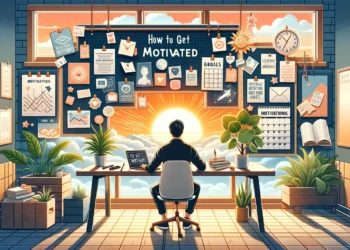Imagine waking up every day feeling like you’re stuck on autopilot. That’s how Sarah felt for years—working 60-hour weeks yet drained of joy. One evening, she stumbled on a podcast explaining how hidden mental patterns shape our lives. Within months, she transformed her career and relationships using simple mindset shifts. Her secret? Learning to work with her mind instead of against it.
Your beliefs and habits operate like invisible software, directing 95% of your decisions without conscious input. Think about driving home without remembering the turns—that’s your autopilot in action. But what if you could upgrade that system to align with your deepest goals?
This guide reveals practical strategies to rewrite limiting narratives holding you back. You’ll discover how everyday thoughts create your reality—and how to flip the script. From Oprah’s affirmation rituals to neuroscience-backed sleep techniques, we blend timeless wisdom with modern science.
Key Takeaways
- Your autopilot mindset shapes daily choices more than you realize
- Small belief shifts create ripple effects across all life areas
- Proven methods exist to align hidden patterns with conscious goals
- Sleep and mindfulness amplify transformation efforts
- Consistent action rewires mental pathways over time
- Success stories prove lasting change is achievable
Understanding the Subconscious Mind
Your mind operates like a silent architect—designing your reality through two distinct systems. The conscious mind handles logic and short-term decisions, while the subconscious mind manages automatic responses and deeply rooted patterns. Think of it like this: you choose what to eat for lunch (conscious), but your heartbeat and breathing happen effortlessly (subconscious).
Conscious vs. Subconscious Differences
While your conscious awareness focuses on immediate tasks, your subconscious stores every memory and emotion since childhood. Neuroscience reveals it processes 11 million bits of information per second—compared to just 40 bits for your conscious brain. This explains why you can drive a car or tie shoes without thinking, skills mastered through repetition.

How Early Experiences Shape Beliefs
Between ages 0-7, your brain absorbs experiences like a sponge—no filter between truth and fiction. A child told “money is scarce” might carry scarcity fears into adulthood, even with financial success. These imprints become mental shortcuts that influence reactions to challenges or opportunities.
Recognizing this connection helps you rewire outdated patterns. Like updating smartphone software, you can align automatic responses with current goals. The first step? Notice when old narratives surface—they’re clues pointing to upgrades your mind craves.
The Science Behind Subconscious Reprogramming
Your brain works like a biological supercomputer—constantly filtering and storing data through intricate networks. At its core, mental programming relies on neuroplasticity: your brain’s ability to rewire itself based on repeated experiences. This process isn’t magic—it’s rooted in decades of neuroscience research.

How Your Brain Processes Information
Every sight, sound, and thought triggers electrical impulses across neural pathways. When actions or ideas repeat, these pathways strengthen—like carving grooves in a vinyl record. Studies show practicing a skill for 66 days creates lasting neural changes. This explains why habits feel automatic over time.
Your mind uses two types of processing systems. The conscious brain analyzes details slowly, while the subconscious handles 95% of decisions through stored patterns. Think of it as your mental autopilot—processing 40 million bits of data per second versus your conscious 40 bits.
Targeted techniques leverage this biology. For example, affirmations activate the brain’s reward centers, as proven in a 2016 Social Cognitive study. Consistent practice reshapes your neural landscape, turning effortful choices into effortless behaviors. It’s how athletes master complex moves—and how you can install empowering mental scripts.
Understanding this science helps you reprogram subconscious responses strategically. Like training muscles, focused repetition builds stronger, healthier thought patterns aligned with your goals.
Identifying and Overcoming Limiting Beliefs
What if invisible barriers dictated 80% of your daily choices? Many people unknowingly carry mental roadblocks formed through repeated experiences—like hearing “you’ll never succeed” from a critical teacher or internalizing childhood teasing. These hidden scripts operate beneath awareness, steering decisions about careers, relationships, and self-worth.
Spotting the Silent Saboteurs
Negative self-talk often sounds like: “I’m not qualified for this promotion” or “Creative work isn’t my strength.” One writer spent years avoiding manuscripts because a high school teacher called her essays “uninspired.” She later discovered this single comment shaped her beliefs about creative potential.
| Belief Type | Thought Pattern | Outcome |
|---|---|---|
| Scarcity Mindset | “There’s never enough” | Missed investments |
| Imposter Syndrome | “I got lucky” | Career stagnation |
| Perfectionism | “It’s not ready yet” | Unlaunched projects |
Physical feelings often reveal buried limitations. Notice when your stomach tightens during opportunities or your chest feels heavy after brainstorming ideas. These bodily signals point to conflicting thoughts needing attention.
Break the cycle by writing down doubts as they arise. One artist transformed her practice by replacing “I’m not a real painter” with “My style evolves with each brushstroke.” Awareness creates space to rewrite narratives that no longer serve you.
Effective Subconscious Reprogramming Techniques
Your mental patterns hold the blueprint for daily choices—but you hold the drafting pencil. Lasting transformation begins with two non-negotiables: crystal-clear intentions and personalized strategies that fit your unique wiring.
Setting Clear Intentions
Start by writing three “I am” statements that mirror your desired reality. A 2022 Harvard study found people who define precise goals triple their success rates. For example: “I confidently embrace new challenges” or “I attract opportunities aligned with my purpose.”
Choosing the Right Method for You
Match your approach to your natural tendencies. Early risers might pair affirmations with morning walks, while night owls could use guided visualization before sleep. Track results weekly using a simple 1-10 scale.
| Technique | Best For | Daily Practice |
|---|---|---|
| Visualization | Creative thinkers | 5-minute mental rehearsals |
| Affirmations | Verbal processors | Mirror repetitions |
| Meditation | Introspective types | Breath-focused sessions |
Notice resistance? That’s your signal to tweak the method. One entrepreneur swapped silent meditation for dance-based mindfulness when sitting still felt restrictive. Your toolkit should evolve as you do—flexibility accelerates growth.
Visualization Techniques for Lasting Change
What if closing your eyes could train your brain like an Olympic athlete? Basketball players use this exact strategy—mentally rehearsing free throws until muscle memory kicks in. Studies show athletes who visualize success improve performance by 23% compared to those who don’t. Your mind responds to vivid images as if they’re real experiences, creating new neural pathways.
Fueling Mental Rehearsals With Feeling
Great visualizations aren’t just pictures—they’re full-sensory experiences. Imagine hearing sneakers squeak on the court as you sink a three-pointer. Feel the adrenaline rush when the crowd cheers. These emotional hooks make mental practice stick. A 2018 sports psychology study found athletes who added feelings to their visualizations scored 18% higher in games.
Blueprint for Daily Mental Training
Start with just five minutes each morning:
| Step | Focus | Duration |
|---|---|---|
| 1. Ground | Deep breathing | 60 seconds |
| 2. Imagine | Desired outcome | 3 minutes |
| 3. Embody | Victory sensations | 60 seconds |
Consistency matters more than marathon sessions. One teacher visualized calm classroom interactions for 90 seconds daily—within weeks, her stress levels dropped 40%. Your brain builds skills through brief, focused repetitions. What images will you plant today to harvest tomorrow?
Harnessing Positive Affirmations and Self-Talk
What if changing your inner voice could unlock hidden strength? Words shape your reality like wind sculpts mountains—slowly, powerfully, permanently. Research shows we process 50,000+ thoughts daily, many repeating outdated stories about our capabilities.
Crafting Statements That Stick
Effective affirmations work like mental armor. They replace “I’m not good enough” with “I grow through every experience.” A UCLA study found people using present-tense phrases like “I am resilient” showed 31% lower stress levels within three weeks.
Build yours using three rules:
- Start with “I am” or “I choose”
- Keep them shorter than 10 words
- Include active verbs like “create” or “attract”
Instead of “I’ll stop doubting myself,” try “I trust my decisions completely.” This reframe taps into your brain’s preference for clear, actionable commands. Pair them with deep breathing to amplify their impact—oxygen fuels neural changes.
One nurse transformed her confidence by writing “I handle emergencies with calm expertise” on her locker mirror. Within months, colleagues noticed her newfound poise during crises. Your words build mental pathways—choose ones leading where you want to go.
“Language creates reality. Change your story, change your life.”
Consistency turns whispers into roars. Set phone reminders or sticky-note prompts until positive self-talk becomes second nature. Your mind believes what you repeat most—give it messages worth believing.
Exploring Hypnosis and Autosuggestion
What if you could install new mental software while you sleep? Hypnosis works like a direct update for your mind, bypassing conscious resistance to plant empowering beliefs. When your conscious mind relaxes—similar to daydreaming—suggestions flow straight to deeper mental layers. Research shows this state increases suggestibility by 300%, making it ideal for rewiring stubborn patterns.
Benefits of Self-Hypnosis
Self-hypnosis lets you become both architect and builder of your mindset. Studies reveal it boosts motivation 42% faster than willpower alone by aligning conscious goals with automatic behaviors. Daily 20-minute sessions can:
- Replace fear-based reactions with calm decision-making
- Enhance focus during high-pressure situations
- Strengthen belief in untapped capabilities
Utilizing Autosuggestion Effectively
Napoleon Hill’s famous method proves autosuggestion works best when paired with emotional fuel. Try this nightly routine:
- Repeat a phrase like “Every challenge strengthens my resolve” aloud
- Visualize succeeding at a specific goal
- Notice physical sensations (racing heart, relaxed shoulders)
| Method | Duration | Focus Area |
|---|---|---|
| Self-Hypnosis | 15-20 mins | Deep relaxation |
| Autosuggestion | 5 mins | Specific affirmations |
“Whatever the mind can conceive and believe, it can achieve.”
These techniques tap into your brain’s natural ability to form new connections. One accountant turned hypnotist reported tripling client results after adding sensory-rich imagery to sessions. Your mind’s power lies in what you feed it—choose nourishing suggestions.
Meditation and Mindfulness for Reprogramming
Your breath holds a secret key to mental transformation. When you meditate, you create space between reactions and responses—like pressing pause on life’s remote control. This gap lets you rewrite automatic patterns that once felt unchangeable.
Building Your Daily Mind Reset
Consistency beats duration. Start with five minutes each morning—the brain learns fastest in fresh states. Research shows 21-day streaks create lasting neural shifts. Choose a trigger: after brushing teeth or before coffee. Anchor your practice to existing habits.
| Time of Day | Technique | Focus |
|---|---|---|
| Morning | Breath counting | Setting daily intent |
| Lunch break | Body scan | Releasing tension |
| Evening | Loving-kindness | Processing emotions |
Mindfulness acts as your mental bridge. Notice thoughts like passing clouds instead of gripping them. This awareness helps spot limiting beliefs before they hijack your day. Pair meditation with hypnosis sessions—both work best in relaxed states.
Too busy? Try micro-sessions:
- 2 minutes of focused breathing before meetings
- Mindful walks during phone calls
- Gratitude reflections while cooking
Thais Gibson’s 31,000 students prove: small daily investments compound. Your mind grows stronger each time you choose presence over autopilot.
Leveraging Binaural Beats for Brainwave Entrainment
Your headphones might hold the key to unlocking peak mental states. Binaural beats use two slightly different tones—one in each ear—to create a rhythmic pulse your brain naturally syncs with. This “frequency following response” shifts your mind into relaxed alpha waves (8-12 Hz) or creative theta waves (4-8 Hz)—ideal states for absorbing new beliefs.
Understanding Alpha and Theta Brainwaves
Alpha waves act like mental cruise control—calm yet focused. Theta waves dive deeper, linking to intuition and vivid imagination. A 2020 study found gamma beats (40 Hz) boosted attention by 19% in students. But for transformation, theta reigns supreme—it’s why ideas flow freely during showers or morning walks.
Tips for Using Binaural Audio
Start with 10-minute sessions using noise-canceling headphones. Match frequencies to your goal:
| Brainwave | Frequency | Best For |
|---|---|---|
| Alpha | 10 Hz | Stress relief |
| Theta | 6 Hz | Creativity boosts |
Consistency beats marathon listening. Try these ways to integrate beats:
- During commutes (theta for idea generation)
- Pre-meeting focus (alpha for calm clarity)
- Evening wind-downs (delta waves for deep sleep)
Experiment with different methods—nature sounds vs. pure tones. One graphic designer tripled her output using theta tracks while sketching. Your mind thrives on tailored experiences. What rhythm will become your secret weapon?
Redesigning Daily Habits for Success
Your morning routine is the launchpad for everything that follows. A study in Nature Human Behaviour found that 43% of daily actions are habitual—not deliberate choices. This means your habits quietly steer your path to success or stagnation. To change direction, you need intentional systems that work with your biology, not against it.
Creating Empowering Routines
Start by auditing your current patterns. Track your activities for three days using this simple framework:
| Old Habit | New Replacement | Action Step |
|---|---|---|
| Scrolling before bed | Evening journaling | Place notebook on nightstand |
| Skipping workouts | 10-minute walks | Set shoes by front door |
Consistency beats intensity. Reading just 5 pages daily adds 1,825 pages yearly—equivalent to 15 books. One teacher transformed her energy levels by swapping afternoon coffee for green tea, proving small shifts create compound results.
“You don’t rise to the level of your goals—you fall to the level of your systems.”
View each sunrise as a reset button. Missed yesterday’s workout? Today’s a fresh chance to succeed. Your habits are the bricks building your future—choose ones that construct castles, not cages.
Optimizing Your Environment for Mental Reprogramming
Your surroundings act as invisible architects shaping your mental landscape. Research shows your brain processes over 2 million environmental cues daily—from news headlines to coworkers’ body language. These inputs become building blocks for your habits and beliefs, often without conscious awareness.
Start by auditing your social ecosystem. Limit time with people who drain energy or reinforce limiting narratives. Replace reality TV marathons with documentaries that expand your view of what’s possible. One study found reducing negative media exposure boosted participants’ optimism by 37% in three weeks.
Curate spaces that mirror your aspirations:
- Place inspiring books where you’ll see them daily
- Use blue light filters on devices after sunset
- Designate a meditation corner with plants and soft lighting
Ambient techniques amplify your efforts. Play instrumental music during work hours to deepen focus. Studies show theta-wave sounds improve memory retention by 22%. Surround yourself with visuals that reflect your desired world—vision boards or nature scenes work wonders.
“You can’t fly with eagles if you keep scratching with turkeys.”
Your physical world should whisper encouragement, not chaos. Clear clutter from your desk to mirror mental clarity. Choose wall colors that evoke calm—soft greens and blues lower stress hormones. Small changes create ripple effects, helping your conscious mind stay aligned with growth.
Remember: every sensory input votes on who you become. Make your environment the campaign manager for your best self.
Developing Self-Discipline and Resilience
Life’s toughest storms often reveal our strongest anchors. Farmers facing drought-stricken fields or entrepreneurs navigating market crashes share one truth: setbacks forge unshakable grit. Your ability to persist through challenges determines whether obstacles become stepping stones or roadblocks.
Transforming Stumbles Into Strength
When progress stalls, use these techniques to reignite momentum:
| Strategy | Action Step | Benefit |
|---|---|---|
| Micro-Commitments | Complete one 5-minute task | Builds momentum |
| Emotion Mapping | Journal frustrations | Identifies growth areas |
| Progress Spotlights | Review past wins | Boosts confidence |
Valerie Grimes’ work with ranchers proves this: those who tracked small daily wins improved resilience 68% faster. Your power lies in treating setbacks as feedback—not failure. One app developer turned a rejected prototype into a top-selling tool by analyzing user critiques.
Harness frustration as fuel. When emotions surge, ask: “What can I control right now?” This simple shift helped nurses during crises maintain clarity. Pair the Pomodoro Technique with breathing exercises to stay focused during chaotic times.
“Discipline is choosing between what you want now and what you want most.”
Every plateau is your mind’s invitation to upgrade methods. Like farmers rotating crops, adjust your approach while staying rooted in purpose. Your greatest breakthroughs live just beyond comfort’s edge.
Tracking Your Progress and Celebrating Small Wins
What if your daily victories held the key to lasting transformation? Growth thrives on visibility—when you measure milestones, you fuel momentum. Studies show people who track progress achieve goals 2.3x faster than those who don’t. Your mind craves evidence of advancement to stay motivated.
Indicators of Personal Growth
Start by choosing tracking methods that match your lifestyle. A teacher doubled her productivity using a simple app to log completed tasks. Try these proven ways:
| Tool | Best For | Frequency |
|---|---|---|
| Voice memos | Verbal processors | Daily reflections |
| Bullet journals | Visual learners | Weekly reviews |
| Habit trackers | Goal-oriented types | Monthly check-ins |
Small wins act as mental fertilizer. Completing a 10-minute workout or choosing water over soda might seem minor—but these experiences rewire your brain’s reward system. Neuroscience confirms celebrating micro-achievements releases dopamine, reinforcing positive patterns.
Organize successes in order of impact. One entrepreneur color-coded her calendar: green for completed tasks, gold for breakthroughs. This visual system helped her spot trends and adjust goals quarterly.
“Tiny gains, celebrated daily, become life-altering results.”
Set reminders to pause and acknowledge progress. Did you meditate three times this week? That’s 150% more than last month. Your mind grows stronger when you honor its journey—one checked box at a time.
Real-Life Success Stories and Inspirational Examples
What if a simple check could rewrite your future? Jim Carrey famously wrote himself a $10 million check for “acting services rendered” in 1990. He visualized cashing it daily—five years later, he earned exactly that amount for Dumb and Dumber. Stories like his prove ordinary people achieve extraordinary results by reshaping their mental patterns.
Case Studies from Everyday Life
Emma, a former teacher, battled writer’s block for a decade. She started spending 10 minutes every day visualizing her book on store shelves. Within a year, she landed a publishing deal. “Seeing the cover in my mind made it feel inevitable,” she says. Her story mirrors Olympic athletes who use mental rehearsals to shave seconds off their times.
Mark transformed his life after adopting a single habit: writing “I attract growth opportunities” on his bathroom mirror. This daily ritual helped him transition from retail work to launching a six-figure landscaping business. His journey shows how small, consistent actions create compound success.
| Name | Challenge | Breakthrough |
|---|---|---|
| Sarah | Chronic self-doubt | Tripled income in 18 months |
| John | Health struggles | Ran first marathon at 52 |
| Lisa | Creative block | Exhibited art internationally |
These examples share one truth: lasting change starts when you unlock your potential through deliberate practice. Whether it’s writing checks like Carrey or repeating affirmations like Oprah, the principles work at any level. Your next chapter begins today—what story will you write?
Integrating Subconscious Reprogramming into Your Lifestyle
Transforming your life starts with weaving mindset shifts into daily rhythms. Like brushing your teeth or checking emails, mental upgrades thrive on consistency. The key lies in designing routines that fit seamlessly into your existing patterns.
Building a Consistent Practice
Create a morning-to-night schedule blending multiple techniques. Pair breathwork with affirmations during your commute. Use lunch breaks for quick visualization sessions. Evening wind-downs become prime time for theta-wave audio or journaling.
| Time | Practice | Purpose |
|---|---|---|
| 7 AM | Mirror affirmations | Set daily intent |
| 12 PM | 5-minute visualization | Reinforce goals |
| 8 PM | Guided hypnosis | Deep pattern work |
Sustaining Long-Term Change
Review progress every 90 days using these metrics:
- Habit consistency (track missed days)
- Emotional responses to challenges
- Goal alignment check-ins
Adjust methods when plateaus hit. Swap meditation for dance if focus wanes. Update affirmations as goals evolve. One CEO tripled her team’s performance by quarterly mindset audits.
“Routines become rituals when infused with meaning.”
Your life transforms when growth practices feel as natural as breathing. Start small, stay flexible, and let your efforts compound like interest in a high-yield account.
Conclusion
Your greatest power lies in the choices you make each sunrise. Through visualization, mindful practices, and strategic hypnosis techniques, you hold the keys to reshaping your life’s trajectory. Every thought you nurture becomes a blueprint—your brain constantly builds what you feed it most.
Take back control by anchoring mornings in purpose-setting rituals. Pair evening reflections with theta-wave audio to deepen neural shifts. Small daily actions—like rewriting self-talk or rehearsing success—compound into unstoppable momentum.
Remember the teacher who transformed stress through brief mental rehearsals? Or the entrepreneur who tripled income by aligning habits with goals? These examples prove lasting success starts when you commit to consistent practice.
Your mind thrives on repetition and emotional engagement. Choose one method from this guide—whether breathwork or journaling—and apply it relentlessly. Take back your narrative, knowing every effort rewires outdated patterns. The life you want isn’t a distant dream—it’s waiting in the choices you make today.
FAQ
What’s the difference between conscious and subconscious thinking?
Your conscious mind handles logic, decisions, and short-term focus. Meanwhile, the subconscious stores emotions, habits, and long-term beliefs. Think of it like a pilot (conscious) and autopilot (subconscious) working together to steer your life.
How do childhood experiences influence beliefs?
Early experiences create neural pathways that shape how you view yourself and the world. Positive moments build confidence, while negative ones may form limiting patterns. Recognizing these roots helps you rewrite outdated scripts.
How does the brain process information for habit formation?
Your brain uses neuroplasticity to rewire itself based on repetition and emotional intensity. Consistent thoughts or actions become automatic, like a trail in a forest. Focus on small, daily steps to build empowering habits.
How can I recognize negative self-talk patterns?
Listen for phrases like “I can’t” or “I’m not enough.” These often stem from fear or past criticism. Replace them with curiosity: “What if I could?” shifts your energy from doubt to possibility.
What’s the best method for setting clear intentions?
Write down specific, present-tense goals like “I am confident in challenges.” Pair them with vivid mental images and feelings. Clarity fuels your brain’s ability to align actions with desires.
Why are emotions important in visualization?
Emotions act as glue for your mental images. Feeling joy, gratitude, or excitement signals to your brain that the visualized reality matters. This turbocharges motivation and primes you to act.
How do I create effective affirmations?
Use present tense, positivity, and personal relevance. Instead of “I will be successful,” say “I attract opportunities effortlessly.” Repeat them with conviction during calm moments, like mornings or meditation.
What are the benefits of self-hypnosis?
It quiets the conscious mind, letting you access deeper layers of awareness. This state heightens suggestibility, making it easier to install new beliefs or release old fears. Apps like Calm or Headspace offer guided sessions.
How can meditation help in changing habits?
Meditation builds awareness of thought patterns without judgment. Over time, you’ll catch limiting beliefs faster and choose empowering responses. Even 10 minutes daily strengthens mental clarity and resilience.
What role do alpha and theta brainwaves play?
Alpha waves (8-12 Hz) boost creativity and relaxation, while theta (4-8 Hz) deepen introspection. Binaural beats in these ranges help you enter states ideal for learning, healing, or reprogramming stuck patterns.
How do daily routines support mental reprogramming?
Routines automate positive behaviors, freeing mental energy for bigger goals. Start with a morning ritual—hydration, affirmations, and movement—to set a tone of self-care and focus.
Can my environment affect my mindset?
Absolutely. Cluttered spaces drain focus, while organized ones promote calm. Surround yourself with inspiring quotes, plants, or calming colors. Your environment subtly reinforces your inner narrative.
How do I stay disciplined during setbacks?
Reframe setbacks as feedback, not failure. Ask, “What can I learn here?” Celebrate tiny wins to build momentum. Discipline grows when you prioritize progress over perfection.
What are signs of progress in personal growth?
You’ll notice quicker rebounds from stress, healthier boundaries, and spontaneous positive thoughts. Old triggers lose their grip as new neural pathways strengthen. Track these shifts in a journal.
Are there real-world examples of this work succeeding?
Yes! Many people report overcoming phobias through visualization or boosting confidence with affirmations. Athletes like Michael Phelps use mental rehearsal to enhance performance—proof mindset shapes reality.
How do I make this a lasting habit?
Pair techniques with existing habits—like affirmations while brushing teeth. Start small, stay consistent, and celebrate progress. Over time, these practices become as natural as breathing.




























































